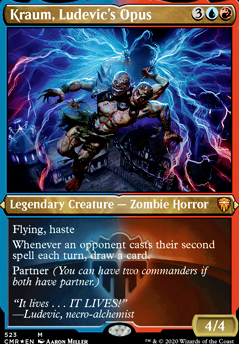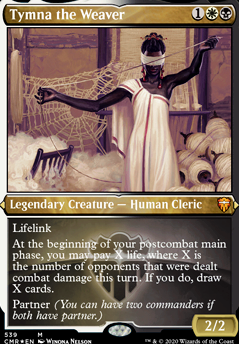Instant (32)
- 1x Ad Nauseam
- 1x Angel's Grace
- 1x Brain Freeze
- 1x Brainstorm
- 1x Cabal Ritual
- 1x Chain of Vapor
- 1x Cyclonic Rift
- 1x Dark Ritual
- 1x Delay
- 1x Demonic Consultation
- 1x Dovin's Veto
- 1x Enlightened Tutor
- 1x Entomb
- 1x Fierce Guardianship
- 1x Fire Covenant
- 1x Flusterstorm
- 1x Force of Will
- 1x Frantic Search
- 1x Intuition
- 1x Izzet Charm
- 1x Lim-Dul's Vault
- 1x Mana Drain
- 1x Mental Misstep
- 1x Mystical Tutor
- 1x Pact of Negation
- 1x Red Elemental Blast
- 1x Silence
- 1x Swan Song
- 1x Vampiric Tutor
- 1x Wear / Tear
- 1x Winds of Rebuke
Creature (7)
- 1x Dark Confidant
- 1x Dockside Extortionist
- 1x Drannith Magistrate
- 1x Gilded Drake
- 1x Rielle, the Everwise
- 1x Thassa's Oracle
- 1x Vilis, Broker of Blood
Planeswalker (1)
Land (29)
- 1x Ancient Tomb
- 1x Arid Mesa
- 1x Badlands
- 1x Blood Crypt
- 1x Bloodstained Mire
- 1x Cephalid Coliseum
- 1x City of Brass
- 1x Command Tower
- 1x Exotic Orchard
- 1x Flooded Strand
- 1x Island
- 1x Mana Confluence
- 1x Marsh Flats
- 1x Misty Rainforest
- 1x Morphic Pool
- 1x Plateau
- 1x Polluted Delta
- 1x Scalding Tarn
- 1x Scrubland
- 1x Snow-Covered Island
- 1x Steam Vents
- 1x Swamp
- 1x Tundra
- 1x Underground Sea
- 1x Verdant Catacombs
- 1x Volcanic Island
- 1x Watery Grave
- 1x Windswept Heath
- 1x Wooded Foothills
Sorcery (11)
Commanders (2)
Artifact (13)
- 1x Arcane Signet
- 1x Chrome Mox
- 1x Cursed Totem
- 1x Grim Monolith
- 1x Lion's Eye Diamond
- 1x Lotus Petal
- 1x Mana Crypt
- 1x Mana Vault
- 1x Mox Diamond
- 1x Mox Opal
- 1x Sensei's Divining Top
- 1x Sol Ring
- 1x Talisman of Dominance
Enchantment (5)
Sideboard
Creature (4)
Sorcery (1)
Artifact (1)
Maybeboard
Instant (13)
Creature (7)
- 1x Barrin, Master Wizard
- 1x Dreadhorde Arcanist
- 1x Jin-Gitaxias, Core Augur
- 1x Laboratory Maniac
- 1x Snapcaster Mage
- 1x Spellseeker
- 1x Walking Ballista
Artifact (3)
Sorcery (4)
Enchantment (3)
Planeswalker (2)
Suggestions
Updates Add
Comments
Attention! Complete Comment Tutorial! This annoying message will go away once you do!
Important! Formatting tips — Comment Tutorial — markdown syntax
Please login to comment
Casual
95% Competitive
| Date added | 4 years |
| Last updated | 4 years |
| Legality | This deck is Commander / EDH legal. |
| Rarity (main - side) | 16 - 2 Mythic Rares 53 - 2 Rares 17 - 2 Uncommons 11 - 0 Commons |
| Cards | 100 |
| Avg. CMC | 1.92 |
| Tokens | Bird 2/2 U, Treasure |
| Folders | Cedh, cEDH Ideas |
| Votes | |
| Ignored suggestions | |
| Shared with | |
| Based on |
sthagenjr
EDH
|
| Views |



